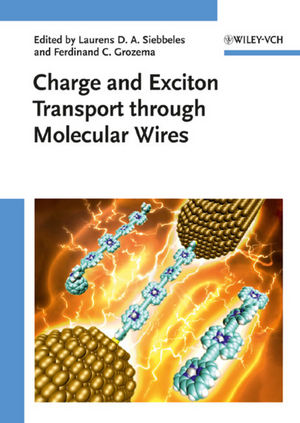Charge and Exciton Transport through Molecular WiresISBN: 978-3-527-32501-6
Hardcover
334 pages
March 2011
 |
||||||
Laurens Siebbeles studied chemistry at the Free University in Amsterdam and obtained his PhD degree at the FOMInstitute for Atomic and Molecular Physics in Amsterdam. He was a post-doc at the University of Paris Sud in France. Currently he is Professor in opto-electronic materials at the Delft University of Technology in The Netherlands. He studies the dynamics of charges and excitons in molecular materials and semiconductor nanocrystals. Charges and excitons are produced with high-energy electron or laser pulses and probed by time-resolved optical and microwave or terahertz measurements. The experiments are supported by theory of charge and exciton dynamics.
Ferdinand Grozema studied chemistry at the University of Groningen and obtained his PhD degree at the Delft University of Technology. In 2007 he spent 7 months working as a visiting scholar at Northwestern University in Evanston, USA. Currently he is an Assistant Professor in the opto-electronic materials section at the Chemical Engineering Department of the Delft University of Technology in Delft. His research
interests consist of theoretical and experimental studies of the properties and dynamics of excited states in bio/organic materials. The main focus of this research has been on charge transport in conjugated molecular wires and in DNA.
Ferdinand Grozema studied chemistry at the University of Groningen and obtained his PhD degree at the Delft University of Technology. In 2007 he spent 7 months working as a visiting scholar at Northwestern University in Evanston, USA. Currently he is an Assistant Professor in the opto-electronic materials section at the Chemical Engineering Department of the Delft University of Technology in Delft. His research
interests consist of theoretical and experimental studies of the properties and dynamics of excited states in bio/organic materials. The main focus of this research has been on charge transport in conjugated molecular wires and in DNA.



